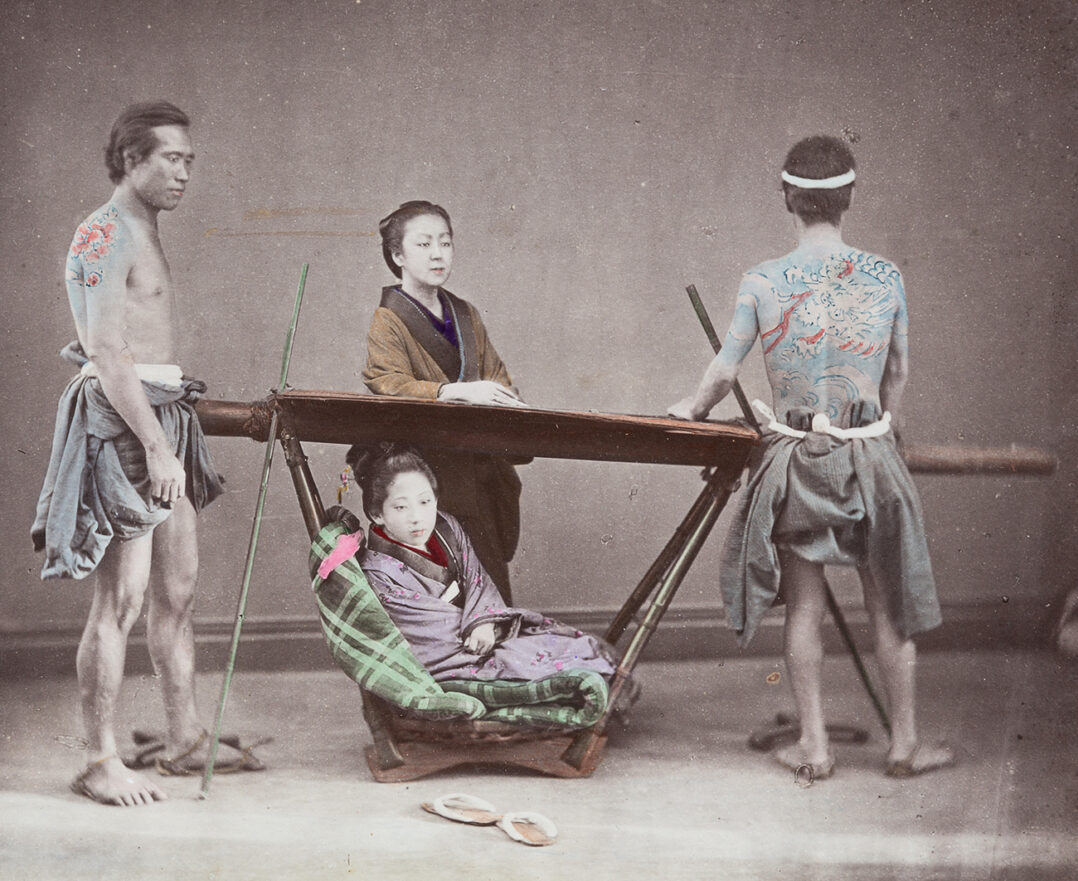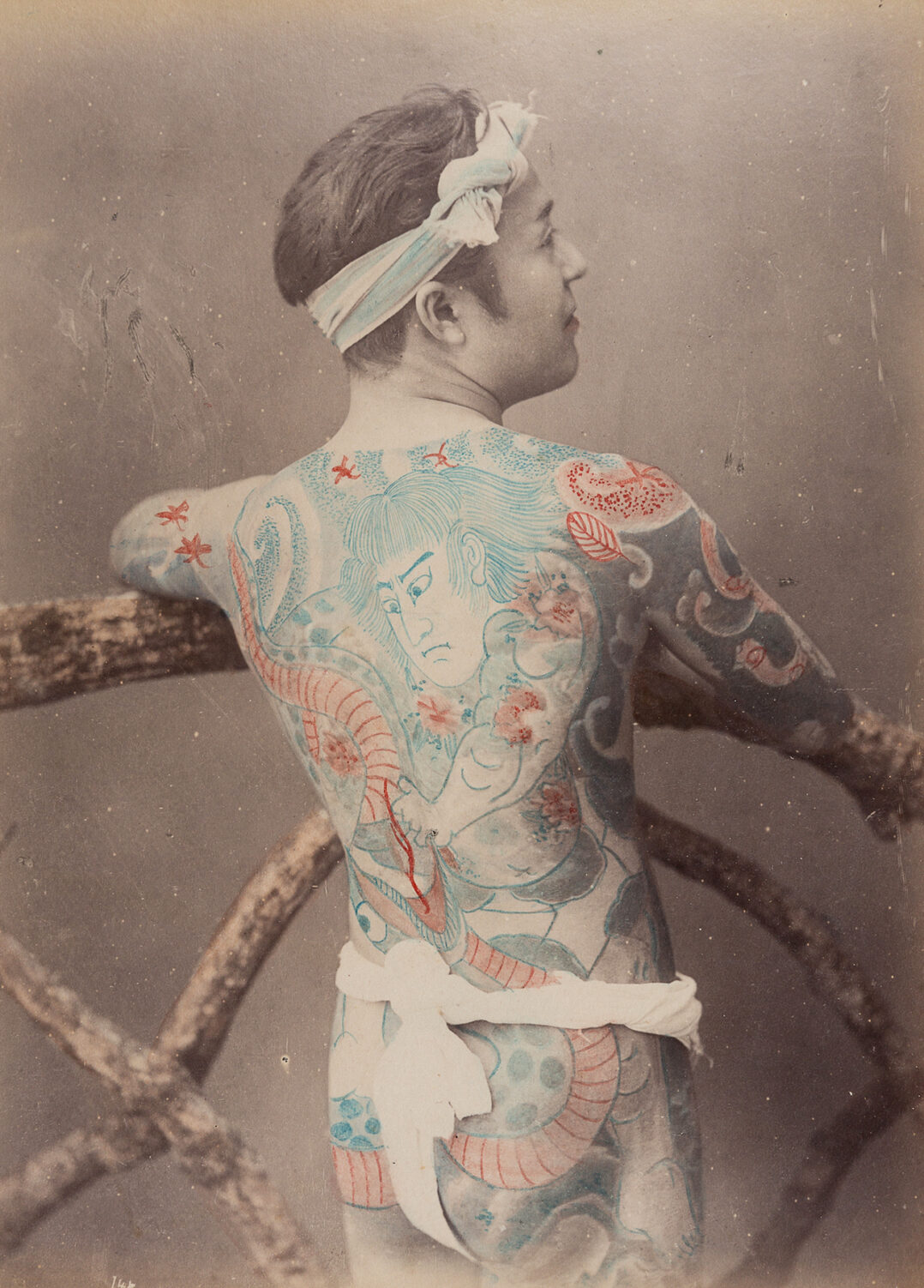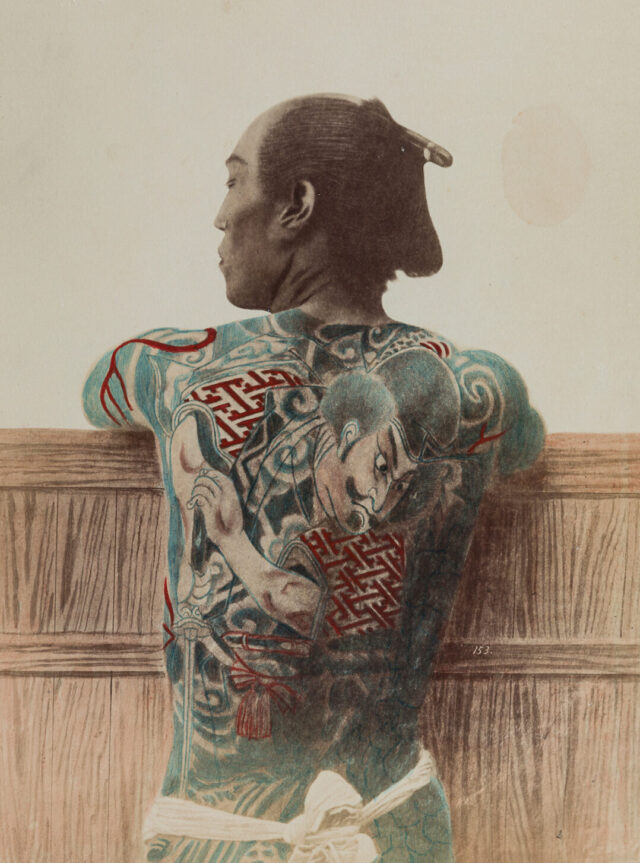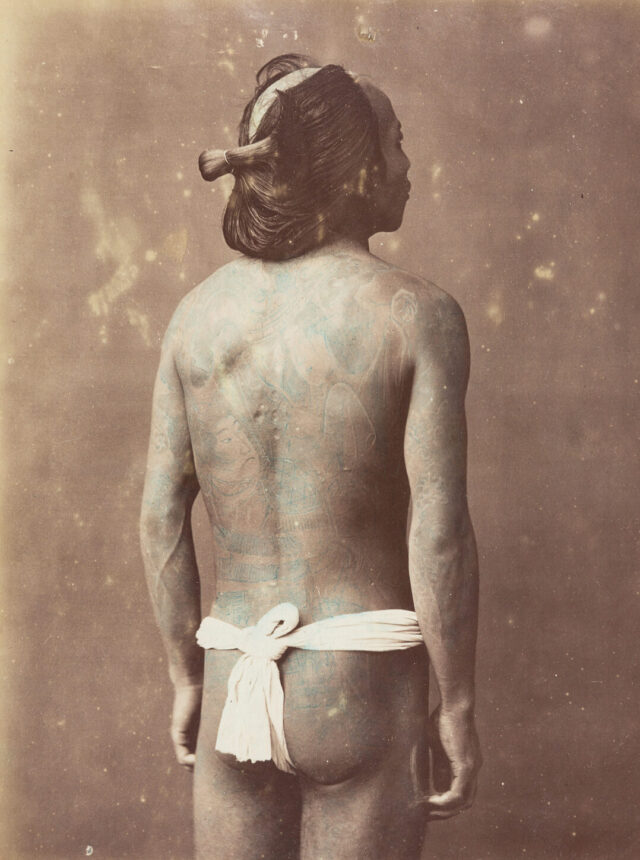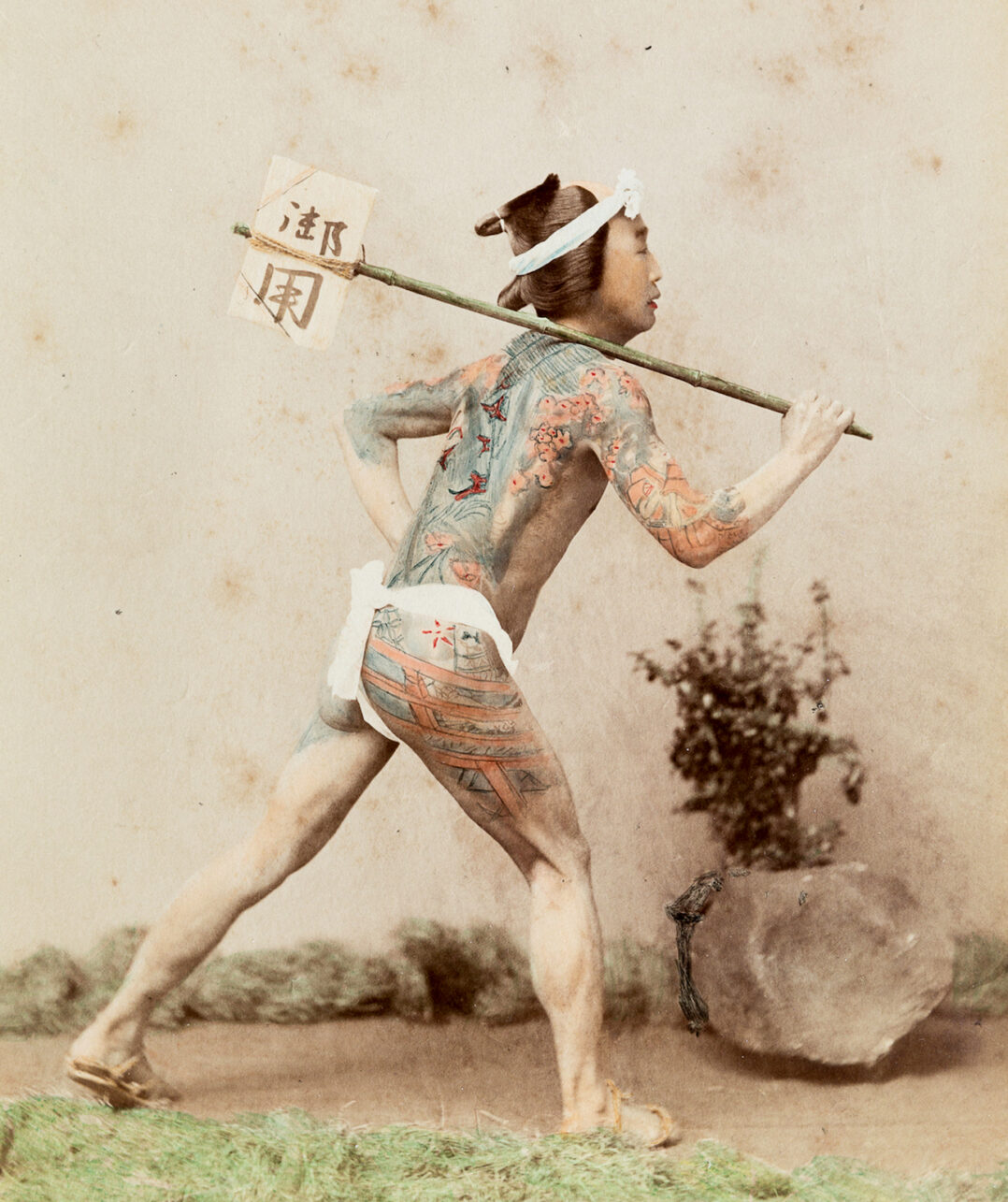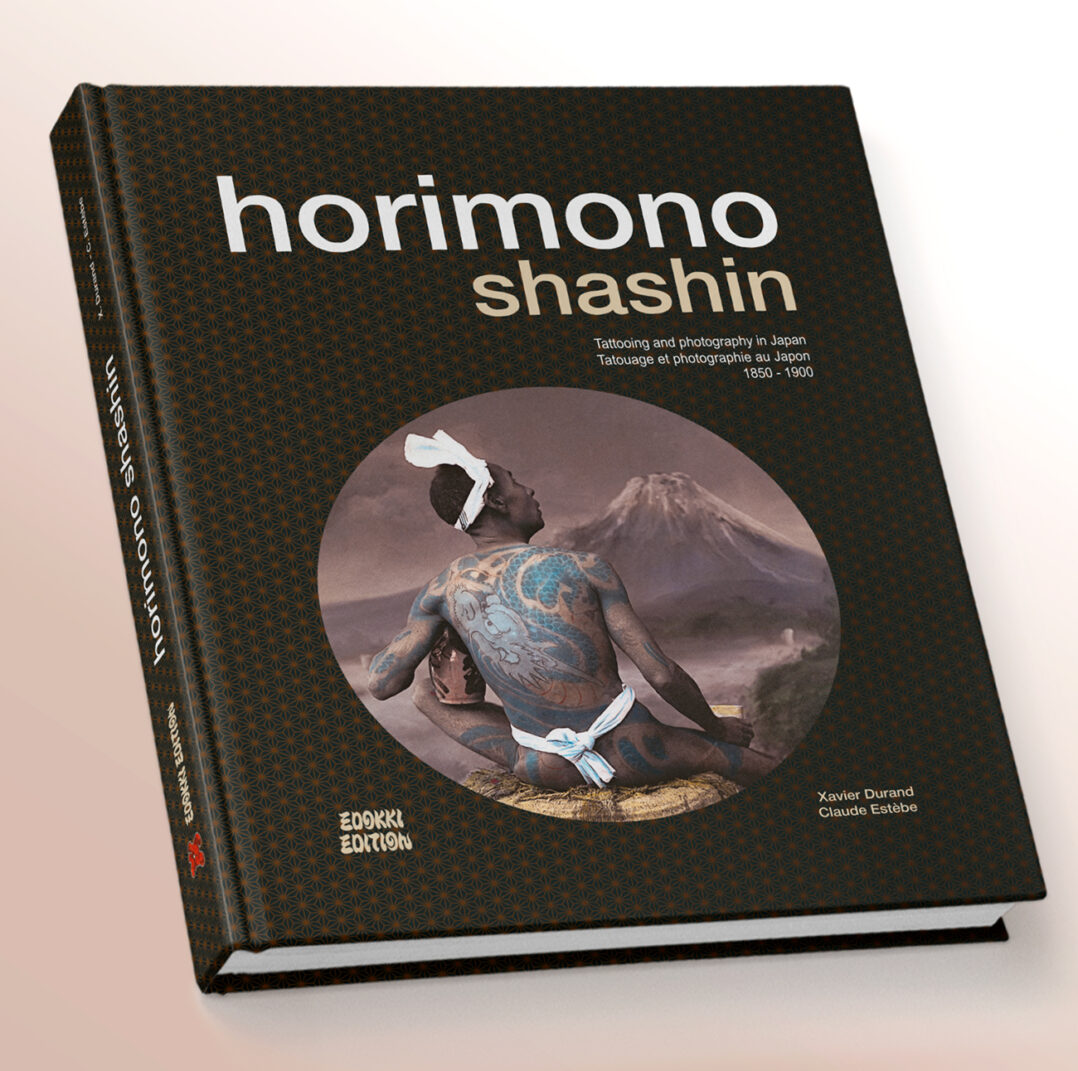Horimono Shashin: tattooing and photography in Japan 1850-1900
From the second half of the 19th century onwards, Japan opened up to the Western world, which discovered a fascinating fashion: bodies tattooed with complex, polychrome motifs. In their accounts published in the West, foreign travelers documented the practice of horimono, the term used to describe traditional tattooing in Japan during the Edo period (1603-1868).
At the same time, the enthusiasm of travellers for hand-coloured pictures fostered the emergence of new studios dedicated to tourist photography (Yokohama shashin) that thrived in the commercial ports open to foreigners. Alongside the inescapable geisha, the figure of the tattooed man became the new expression of masculinity in the eyes of Westerners, the samurai having fallen into disuse after the Meiji Restoration.
For in those days, tattooed people were predominantly men from the working classes, be they firemen, carpenters, horse grooms, coolies or couriers.
Still visible in the public space, they displayed their singularity until the new Meiji government forbade them to do so in 1872 to satisfy the demands of Victorian morality.
These photographic portraits of tattooed people bear witness to a social and cultural phenomenon now forgotten and, therewith, to a popular identity that has marked the history of tattooing and Japan.

